The content of the article
Whooping cough is an infectious disease that is transmitted by airborne droplets. You can get infected only through a sick person - if saliva during coughing gets on the mucous membrane of the mouth or nose of a healthy person. In the open space, the pertussis stick does not survive, so it is impossible to get infected through common household items.
Whooping cough is a very serious disease, manifested by severe coughing attacks. Pertussis is dangerous in that during a spasm, the larynx can close and lead to respiratory arrest. Pertussis often affects children under 6 years of age, but there are also cases of infection with whooping cough by adults. A few decades ago, whooping cough was a deadly disease, a huge number of young children died from it. With the advent of mass vaccination of pertussis patients became less, and the disease became much easier. The pertussis vaccine is administered as part of the general DTP vaccine, and it is this reaction that causes a reaction such as an increase in temperature and a general deterioration in well-being.
Pertussis, getting into the body, begins to multiply actively. The vital products of this stick poison the body with toxins, which cause a severe cough. It is worth noting that the cause of coughing is nerve impulses that are sent to the brain. The cough is not caused by inflammatory processes in the bronchi, therefore, when listening to the chest of a patient with whooping cough, the doctor often concludes “The lungs are clean.”
How long does the disease last
From the moment a person becomes infected until the first symptoms appear, it takes from several days to several weeks. On average, the incubation period is one week. Symptoms gradually increase over 5-15 days. After this comes a period of convulsive antispasmodic cough, which can last a month or more. Then the seizures become rare and not so intense. People say that whooping cough is a disease of a hundred days. This suggests that the disease lasts on average three months, although often distant symptoms in the form of a rare cough can last up to six months. Re-infection does not occur - a sick child develops lifelong immunity.
Symptoms of Pertussis
Very often, pertussis (especially in the early stage of development) is confused with acute respiratory viral infections, acute respiratory infections, bronchitis and other respiratory diseases. Here are some symptoms characteristic of pertussis.
- Cough. This is the main and main symptom. Often, coughing becomes a decisive factor in the diagnosis. A doctor can say with accuracy one cough that it is whooping cough. Cough in this disease is debilitating, long, paroxysmal. A baby can have up to 50 coughing attacks per day. During the attack, the child coughs incessantly, he has no opportunity to breathe. When the child inhales air again, a characteristic whistle is heard, which indicates swelling of the larynx.
- During a strong cough, the child may vomit. This is due to excessive irritation of the back of the tongue.
- In addition, there is a general intoxication of the body. The child becomes lethargic, apathetic, moody, he loses his appetite.
- In the initial stages of development of pertussis, a slight temperature may appear, but it rarely rises above 38 degrees.
- At the end of the coughing sputum discharge may be observed - viscous, transparent, glassy.
- During a coughing fit, the baby's face turns red, and sometimes even blue.Veins protrude on the neck, the frenulum may be damaged during the process of coughing, the tongue is exposed during the attack, the whites of the eyes may turn red from tension.
- Coughing fits during whooping cough are quite lengthy, and can last about five minutes.
If a bacterial infection is attached to whooping cough, complications such as bronchitis, pneumonia, and laryngitis develop. From a strong cough, an umbilical or inguinal hernia may occur. But the worst complication is suffocation. Therefore, it is very important to properly treat whooping cough and be able to get rid of a coughing fit.
Drug treatment for whooping cough
Pertussis can be treated both on an outpatient basis and in a hospital - it all depends on the age of the patient and the severity of the course of the disease. If the patient is not even a year old, it is better to remain under the supervision of doctors in order to remove the condition of false croup at the right time and save the child from strangulation.
As a medical treatment for whooping cough, antibacterial therapy is used. Antibiotics are selected, the most sensitive to the infectious bacillus. As a rule, these are ampicillin, chloramphenicol, aminoglycosides, macrolides. The course of treatment is 5-7 days. It is also very important to introduce special gammaglobulin against pertussis at the beginning of treatment.
In addition, symptomatic treatment is prescribed. First of all, these are antihistamines. They help relieve laryngeal edema, which reduces the number and intensity of coughing attacks. In severe cases, a small patient is prescribed antispasmodics to relieve the intensity of coughing at night. Sedatives may also be prescribed to reduce the number of nerve impulses that cause coughing attacks. When a runny nose and nasal congestion appear, vasoconstrictive drops are used, antipyretics are used to reduce the temperature.
You do not need to take antitussive and expectorant drugs, or do this under the supervision of a doctor and with great care. The fact is that such drugs are aimed at eliminating sputum, that is, they stimulate the cough, which we are trying to get rid of.
The prognosis for patients with whooping cough is favorable. Today, modern methods of treatment are so effective that a fatal outcome is extremely rare and only in old age. You can survive whooping cough, the main thing is to do it right.
How to facilitate the course of pertussis in a child
Here are some tips to help you reduce your baby’s illness time and reduce the duration and intensity of coughing attacks.
- Proven fact that attacks practically do not occur in the open air. Therefore, with a child with whooping cough, you need to often and continuously take a walk (if he has good health).
- Be sure to ventilate the room as often as possible to ensure that the child has access to fresh air.
- Wet cleaning should be done daily to eliminate the triggering factor - house dust.
- For the duration of the disease, you must definitely put a humidifier in the room. It will significantly reduce the frequency and intensity of seizures.
- In the early days of the child, when there are still signs of intoxication, it is necessary to provide the patient with bed rest. Instead of active games, read a fairy tale to your child, look at books.
- Nutrition should be balanced and light. The child should eat often, but little by little. Avoid triggering factors - chocolate, spicy, smoked and fried foods.
- If whooping cough is severe, you may need an oxygen mask. But usually it is practiced only in stationary conditions.
- For the treatment of whooping cough at home, it is very good to use a nebulizer. This is a machine that delivers steam in a concentrated form. After inhalation of the vapor, the edema of the mucosa decreases, the attack stops.
- It is very important to maintain a calm atmosphere in the house, since any nervous experience, crying, fear or emotional shock can trigger the onset of an attack.
- If a baby is sick with whooping cough, it should be left in a dark and cool room, away from provocative sounds and noise. This will reduce the number of coughing fits.
- In winter, the batteries operate at full capacity, drying out the air in the apartment. This is extremely undesirable for a patient with whooping cough. If possible, you need to reduce the intensity of their work or more often ventilate the room and hang wet towels on the radiator.
These simple rules will help you ease the course of the disease and make pertussis less debilitating.
How to stop a coughing fit with whooping cough
If you experience a coughing fit at night, try helping your child. You can give him a drink of warm water to soothe the mucous membrane. Do not stop taking antihistamines so that the swelling does not increase. In addition, with a strong attack of coughing, you can give the baby a breather of an inhaler - it will become much easier for him. If the inhaler is not at hand, take the baby into the bathtub, turn on the hot water and close the door. Tilt the baby to the water so that it breathes hot, moist steam. This will help to survive a fit of coughing.
Against a coughing fit during whooping cough, a salt lamp may be helpful. It is an ordinary lamp, which is covered with a shade of mineral salt. When heated, the salt begins to secrete special ions that purify the air.
If the child is small, do not take risks - it is better to call an ambulance. A coughing fit with whooping cough can cause false croup and the baby will simply suffocate.
Folk remedies for pertussis
Unfortunately, folk recipes are ineffective against such an insidious and annoying disease. They can only be used in combination with conservative treatment. There are some fees and plants that can help reduce spasm, making seizures easier.
Arnica plant is a herb that helps stop barking and dry coughs, relieves excitement and spasm. A spoonful of dry plant should be poured with a glass of boiling water and let it brew for a couple of hours. Arnica decoction should be brewed before night (since it is at night that a greater number of seizures occur). Keep Arnica's broth warm so that when an attack occurs, give his child a drink. Usually half a glass is enough for the baby to calm down and fall asleep at least for 2-3 hours.
Here is a recipe for another effective collection against a suffocating cough. Combine marshmallow flowers, marjoram, thyme, pine buds, plantain leaves, nettles and coltsfoot in equal proportions. Pour three spoons of the collection with a liter of boiling water and insist for at least 6 hours. Drink a tablespoon every 3 hours, especially before bedtime. The active substances of medicinal herbs soothe the mucous membrane of the larynx, relieve edema, and reduce the activity of nerve endings that cause spasm.
Whooping cough is a serious illness. It exhausts the child not only physically, but also morally. Indeed, due to constant attacks of coughing, the baby cannot sleep normally, is scared, and cries. In this condition, the mother should remain calm, follow the doctor’s instructions and be unshakable support and protection for the child. After all, if the mother is calm, and the baby will be comfortable - then everything is going as it should. A calm state of crumbs reduces the number of spasms and attacks. Remember, prevention is the best defense; get your children vaccinated on time!
Video: how to treat cough with whooping cough

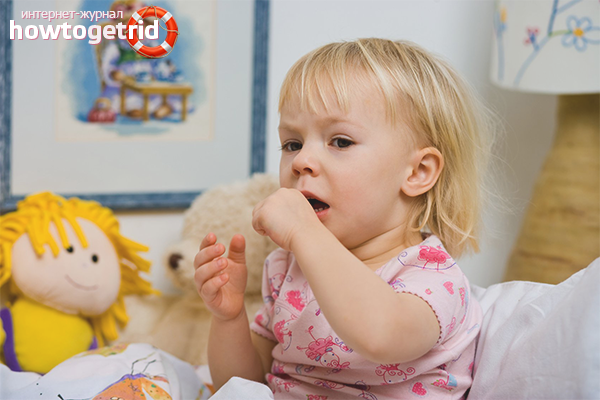
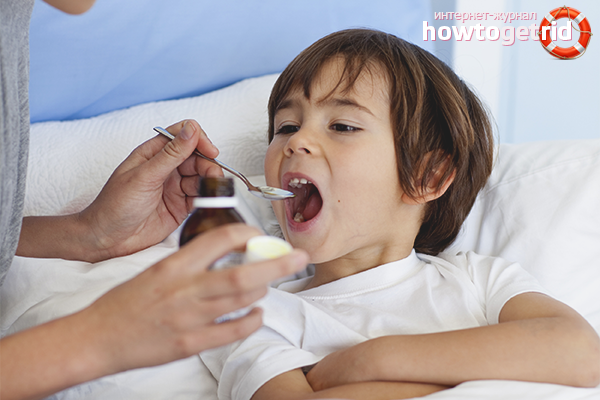
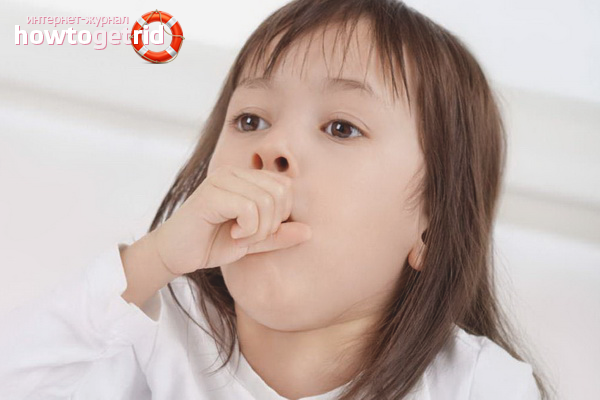

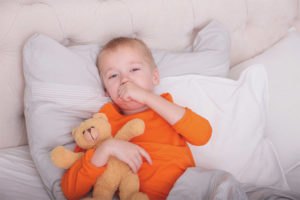
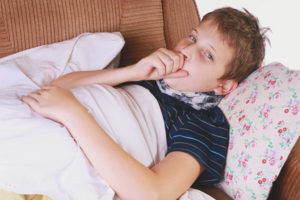
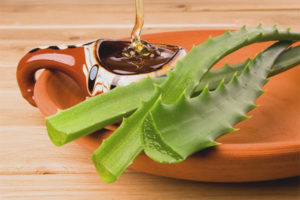
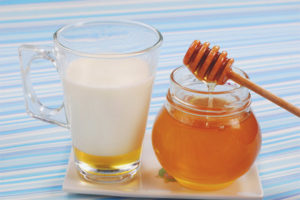

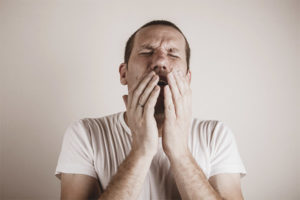

Submit